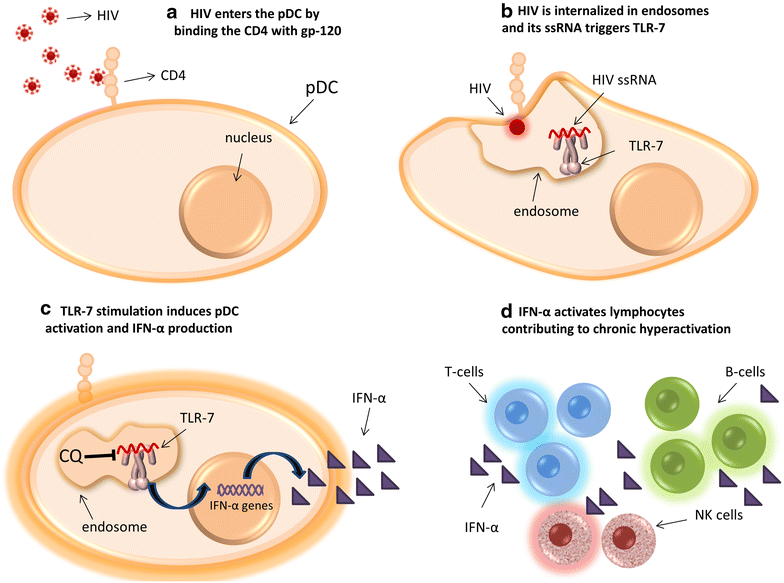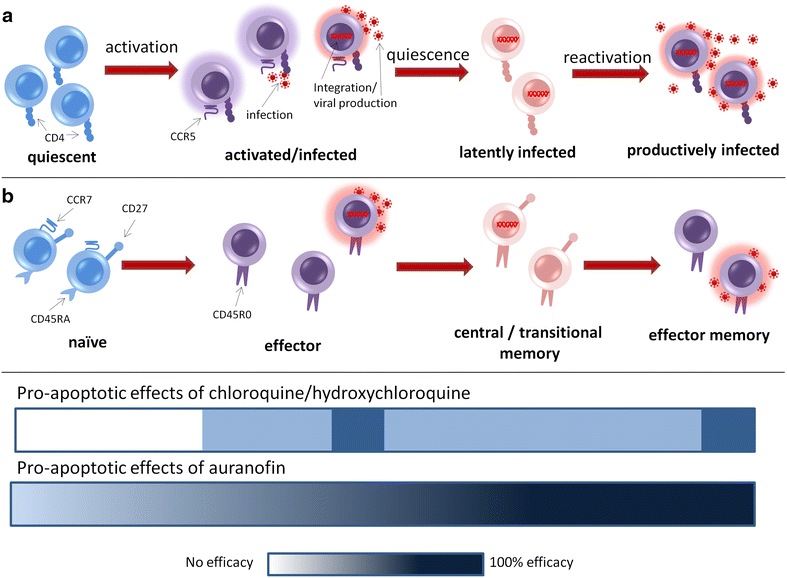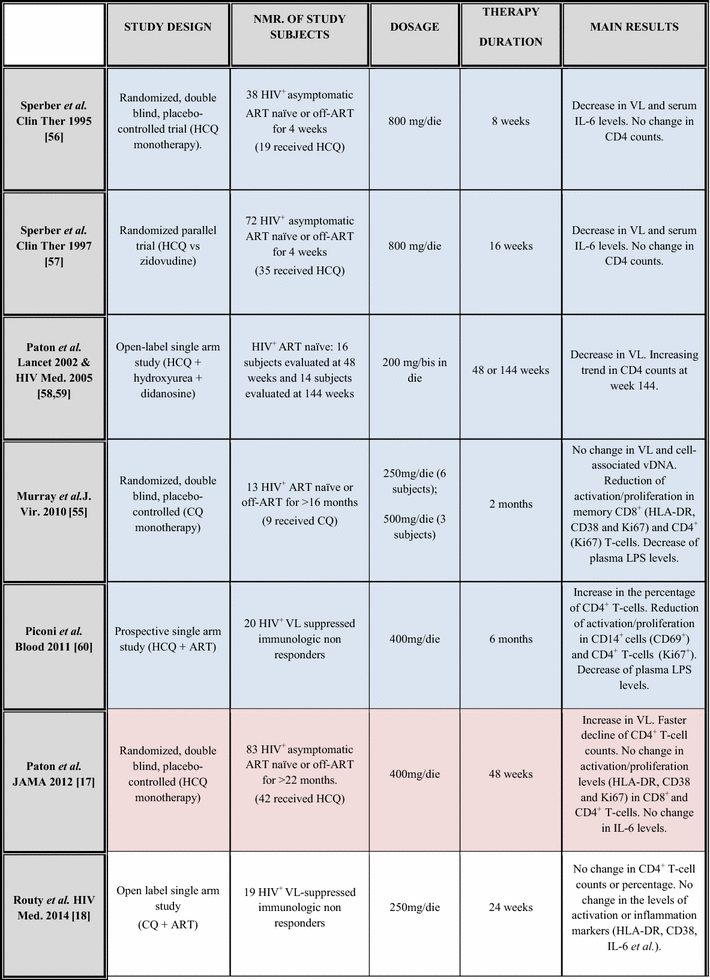Chloroquine and beyond: exploring anti-rheumatic drugs to reduce immune hyperactivation in HIV/AIDS
- PMID: 26084487
- PMCID: PMC4472405
- DOI: 10.1186/s12977-015-0178-0
Chloroquine and beyond: exploring anti-rheumatic drugs to reduce immune hyperactivation in HIV/AIDS
Abstract
The restoration of the immune system prompted by antiretroviral therapy (ART) has allowed drastically reducing the mortality and morbidity of HIV infection. However, one main source of clinical concern is the persistence of immune hyperactivation in individuals under ART. Chronically enhanced levels of T-cell activation are associated with several deleterious effects which lead to faster disease progression and slower CD4(+) T-cell recovery during ART. In this article, we discuss the rationale, and review the results, of the use of antimalarial quinolines, such as chloroquine and its derivative hydroxychloroquine, to counteract immune activation in HIV infection. Despite the promising results of several pilot trials, the most recent clinical data indicate that antimalarial quinolines are unlikely to exert a marked beneficial effect on immune activation. Alternative approaches will likely be required to reproducibly decrease immune activation in the setting of HIV infection. If the quinoline-based strategies should nevertheless be pursued in future studies, particular care must be devoted to the dosage selection, in order to maximize the chances to obtain effective in vivo drug concentrations.
Figures



References
-
- Giorgi JV, Ho HN, Hirji K, Chou CC, Hultin LE, O’Rourke S, et al. CD8+ lymphocyte activation at human immunodeficiency virus type 1 seroconversion: development of HLA-DR+ CD38− CD8+ cells is associated with subsequent stable CD4+ cell levels. The Multicenter AIDS Cohort Study Group. J Infect Dis. 1994;170(4):775–781. doi: 10.1093/infdis/170.4.775. - DOI - PubMed
-
- Hunt PW, Martin JN, Sinclair E, Bredt B, Hagos E, Lampiris H, et al. T cell activation is associated with lower CD4+ T cell gains in human immunodeficiency virus-infected patients with sustained viral suppression during antiretroviral therapy. J Infect Dis. 2003;187(10):1534–1543. doi: 10.1086/374786. - DOI - PubMed
-
- Hunt PW, Brenchley J, Sinclair E, McCune JM, Roland M, Page-Shafer K, et al. Relationship between T cell activation and CD4+ T cell count in HIV-seropositive individuals with undetectable plasma HIV RNA levels in the absence of therapy. J Infect Dis. 2008;197(1):126–133. doi: 10.1086/524143. - DOI - PMC - PubMed
Publication types
MeSH terms
Substances
LinkOut - more resources
Full Text Sources
Other Literature Sources
Medical
Research Materials

